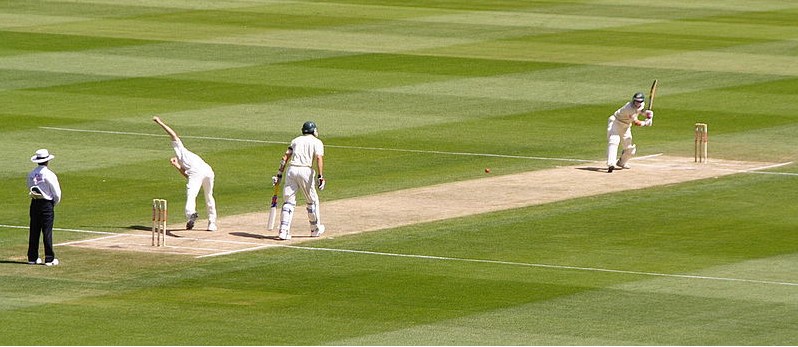
In a podcast titled ‘Lessons Learned with the Greats’, one of the formidable figures of World Cricket, Pakistani fast-bowler Wasim Akram named the Indian tour in 1999 as his most cherished moment on the field. Pakistan and India faced each other in two matches, one held in Delhi and the other in Chennai. Ardent cricket fans of the country who felt the match pressure throbbing in their veins flooded the stadium. Particularly fascinating was what followed after the match which took place in Chennai. Pakistan won the match. Indian fans recovering from a sting of defeat did not forget to give a standing ovation to the brilliant cricket players of Pakistan, who in return took a victory lap as a mark of respect to the Indian cricket fans who showed a real sportsman spirit in the game. Cricket diplomacy has been an important part of Indian foreign policy with Pakistan for a very long time. Sports being a field of comradery and companionship mixed with the unique serotonin surge of winning and bitter elements of losing has served as an ideal field for renewing ties and severing some.
Using a sports event as a channel of diplomacy is not unique to India and Pakistan. Ping-Pong diplomacy between US and China, Ice-Hockey diplomacy between Canada and Soviet Union, Wrestling diplomacy between US and Iran can be cited as a few examples. India and Pakistan, are two countries with two separate bodies yet one cherished history. The year 1947 gave birth to a renowned triplet in international relations- India, Pakistan and a rivalry named Kashmir. This C-section birth which was accompanied by dangerous bleeding and critical conditions left the stretch marks of a lifetime.
India and Pakistan faced each other for the first time on a cricket field in the year in 1951 and again in the year 1964. Hockey triumphed cricket in its popularity during this time. The years between 1965 to 1971 were marked by heightened tensions. These years saw a total suspension of games. India and Pakistan faced each other after a long gap of 17 years in 1978. This eventual face off took place when new governments took charge in both countries. India was led by the Janata Government of Morarji Desai and Pakistan was led by Gen. Zia-ul-Haq. Though the relations improved sufficiently to have a match happen between two countries, the underlying fault lines were as stark as ever before.

From 1970s to 1990s cricket diplomacy had its own highs and lows but what ensued was the incident that attracted world attention to the India-Pakistan face offs. The Kashmir insurgency of the 1990s created a wave of mixed emotions that manifested in erupted encounters. If till this point cricket attracted a crowd that had a thorough knowledge of the game, from this point we can see all sorts of people remaining glued to their television channels. Everyone had a personal stake in the game that was associated with their feelings of region, religion and nationality.
Though BCCI has the final say in the cricket affairs of the country, when it comes to a match with Pakistan, the Central Government gets involved. The match takes place only when governments on both sides are satisfied with the atmosphere. The Pakistani cricket team toured India in 1999 after a change of scene happened after the high tense situation when Prime Minister Atal Bihari Vajpayee and Pakistani counterpart Nawas Sharif agreed to have foreign secretary-level talks and a bus route between Delhi and Lahore. India and Pakistan met each other in a test series after a long gap of 10 years which led to some pleasant instances of sportsmanship like the aforementioned Chennai match incident. But post the Kandahar flight hijacking incident the relations between India and Pakistan, once again, deteriorated.
The next boost happened during Vajpayee’s visit to Pakistan during the SAARC summit in 2004. This was followed by a golden period of cricket diplomacy till the 26/11 attacks in 2009. Indian team has not toured Pakistan since the 26/11 attack. Following Vajpayee, Dr. Manmohan Singh and Narendra Modi have given their own share of contributions to cricket diplomacy. Manmohan Singh and Yousuf Raza Gilani met each other at the 2011 World Cup semi-final clash of India and Pakistan. Narendra Modi called Prime Minister Nawaz Sharif before the India-Pakistan clash in the 2015 world cup.
Sports has an inbuilt power to bring people together. People who distrust each other would rejoice together when the batsman hits a huge six. People who would otherwise hurl abuses at each other would now cheer together when the wicket keeper takes Kangaroo-leap to take a catch. People who have been rivals for decades would forget their rivalry while the ball hits the stump clean. Sports thus becomes an ideal location to begin a conversation. However sports cannot be the solution for the issues that run deep in the mind of these nations. It can diffuse the tensions to a certain level but it certainly cannot act as an alternative to the diplomatic build up that must follow.
Shashi Tharoor, a cricket enthusiast himself, wrote in an article titled ‘India-Pak Cricket: Sports Can Facilitate Diplomacy, Not Replace It’ (The Quint, 18 March 2019) that cricket matches will follow a thaw in India-Pakistan relations and not precede it. Hence it becomes important to maintain the homeostasis within both countries and between them. Though, as Dr. Tharoor rightly mentions, it is completely unfair to put the diplomatic burden on a game, over a period of time, due to the popularity of the game in both countries, they have become ambassadors of India-Pakistan relations. The important factor to keep in mind is to never commit the folly of putting far too much weightage on the diplomatic elements associated with the sport. Efforts, on the other hand, should go into building a permanent solution and an enduring relationship from the camaraderie of twenty-two yards.

